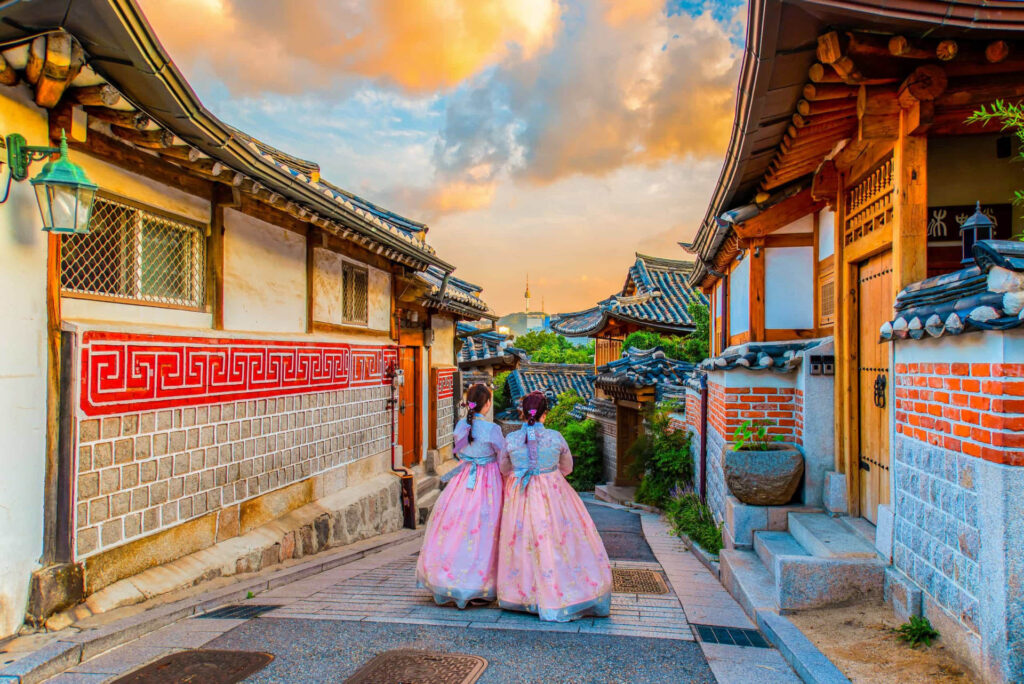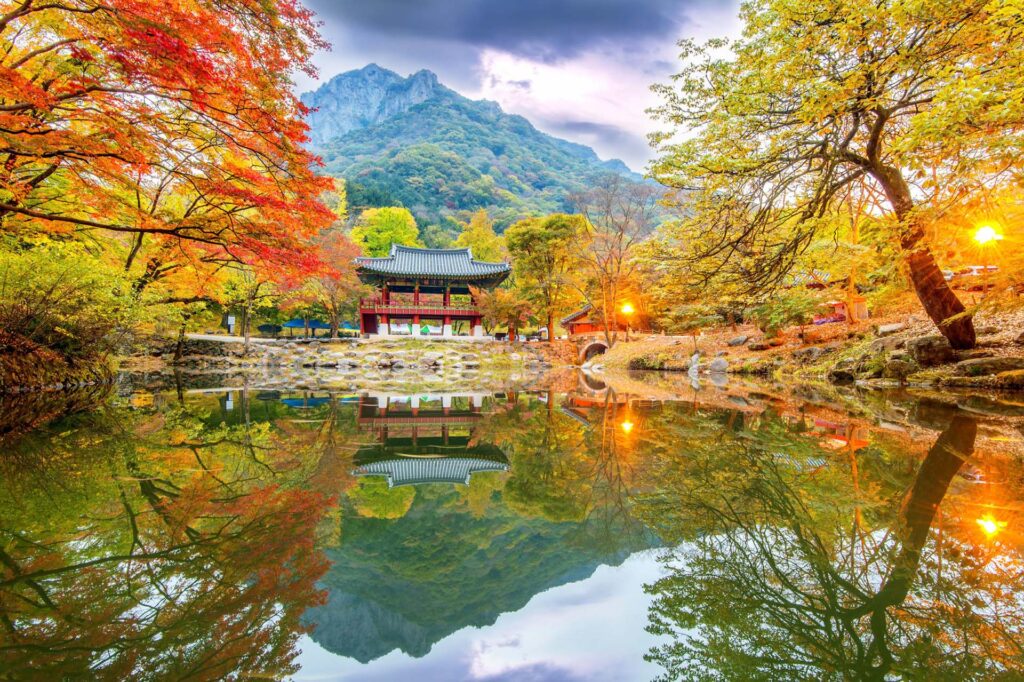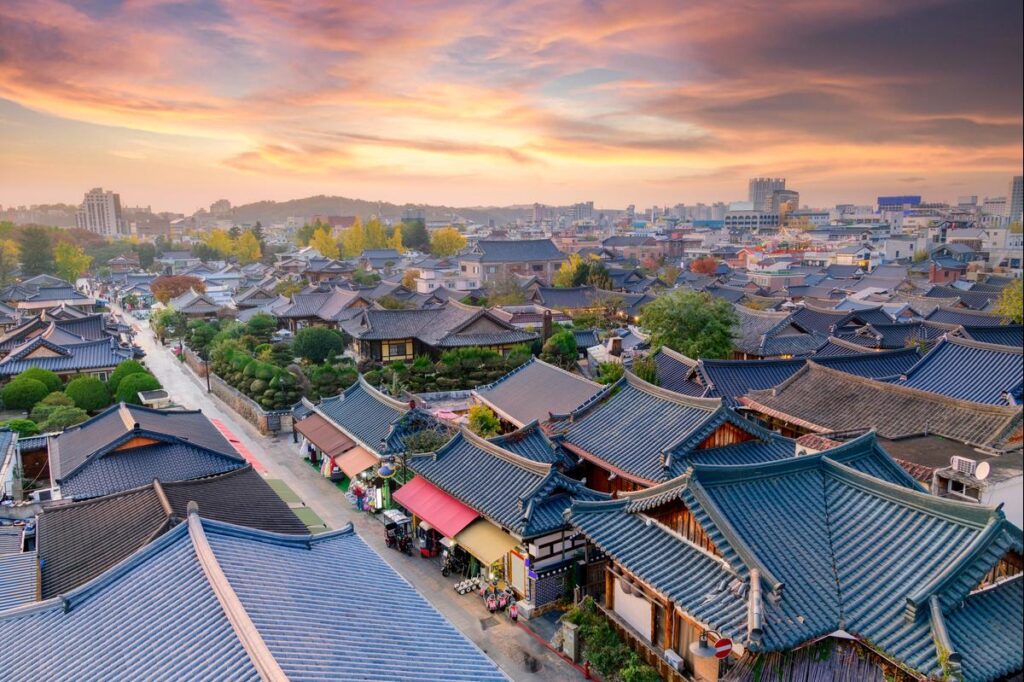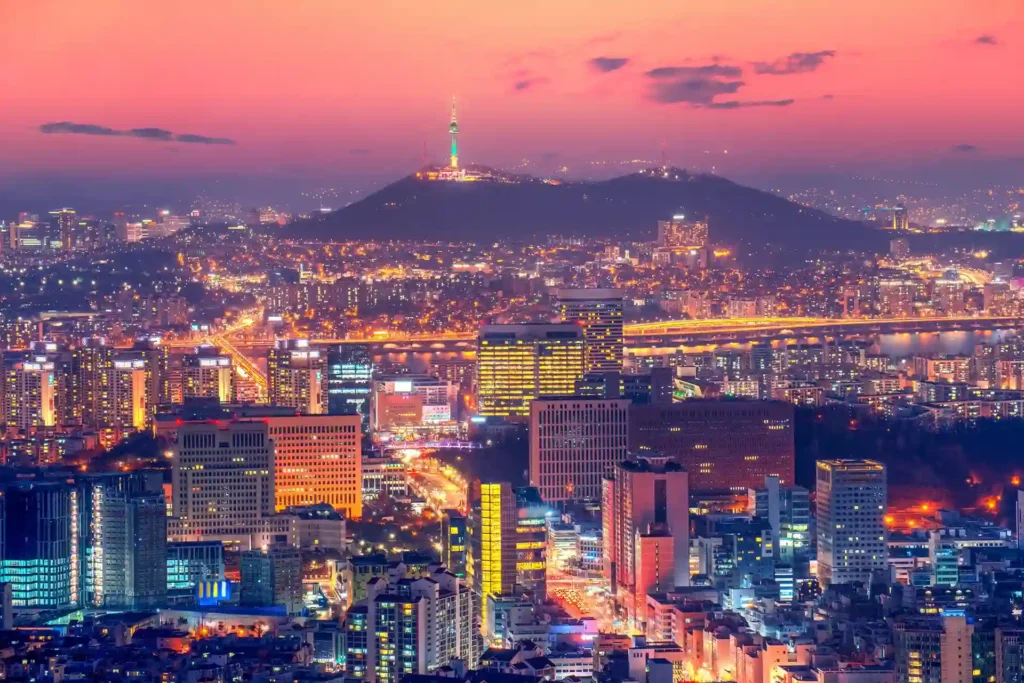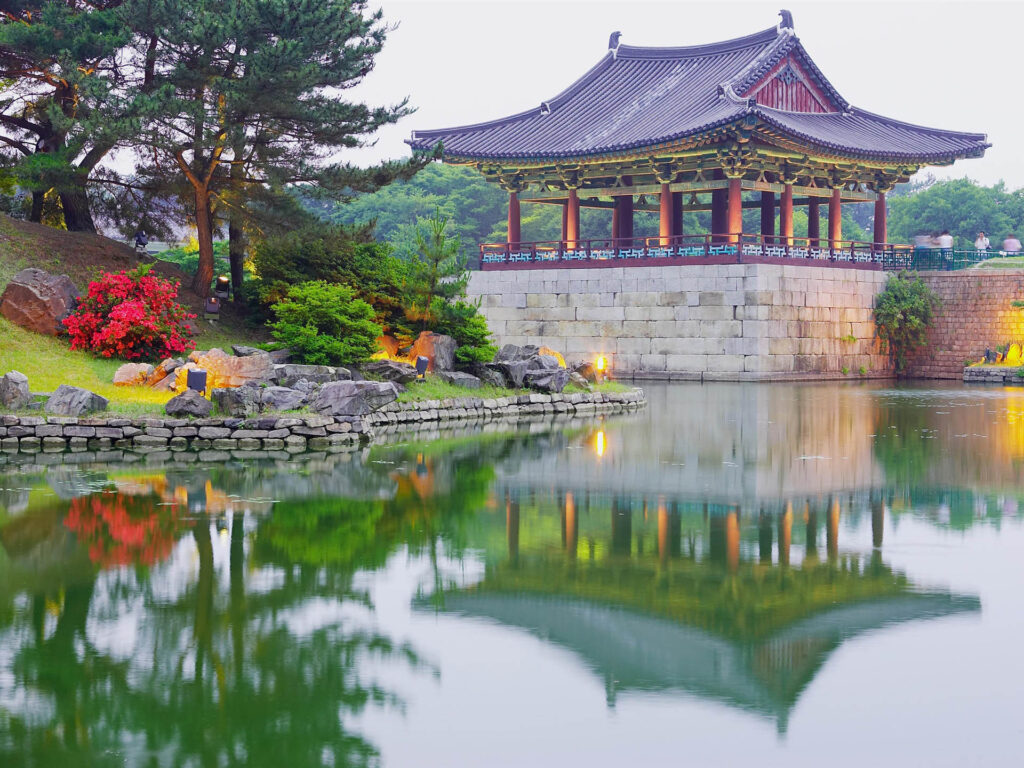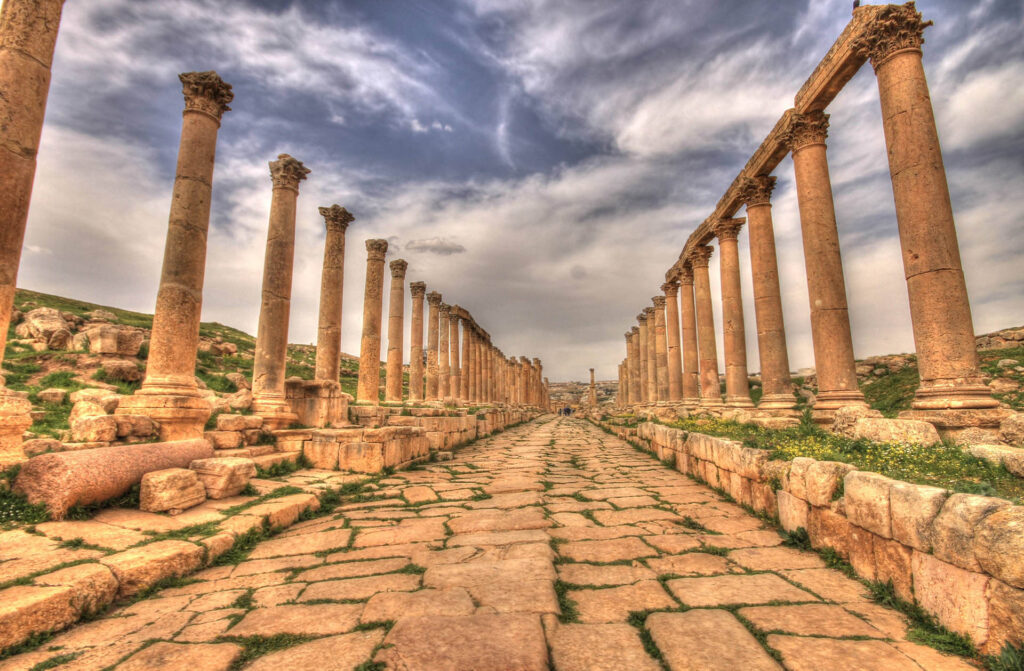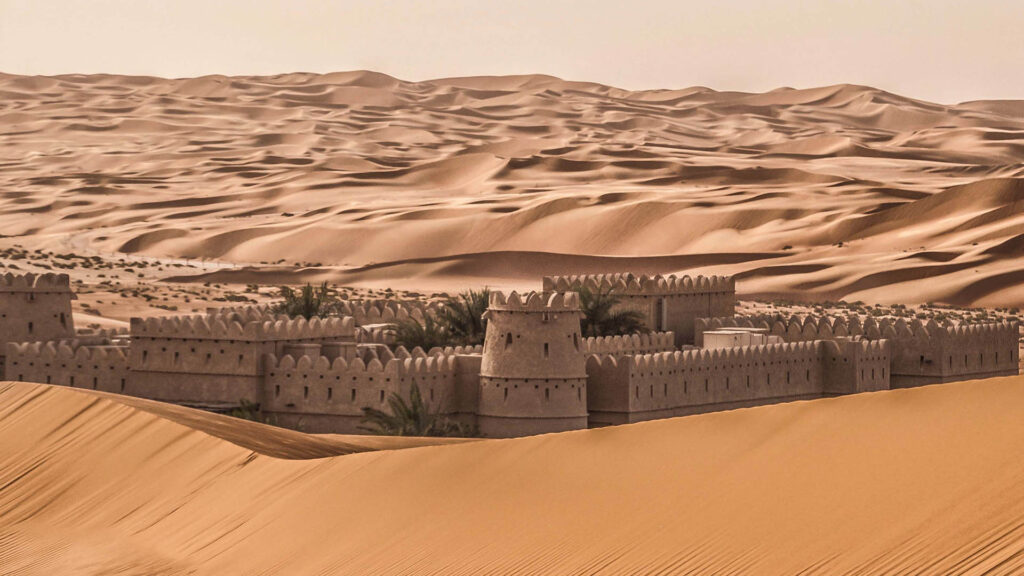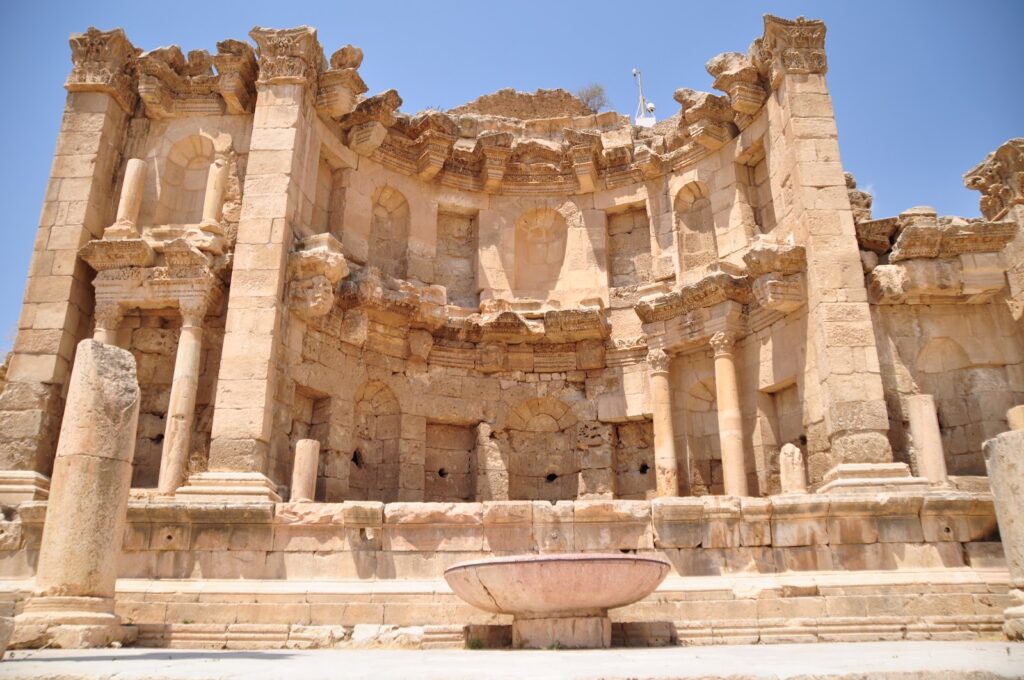Introducing The Gwanghwamun Gate
Gwanghwamun Gate is not just a monumental entrance to Gyeongbokgung Palace, but a symbol of South Korea’s rich cultural heritage and turbulent history. Situated in the heart of Seoul, this grand gate has witnessed the rise and fall of dynasties, the impact of colonial rule, and the renaissance of a nation. In this comprehensive article, we will explore Gwanghwamun Gate’s historical significance, architectural grandeur, cultural importance, and tips for visitors.
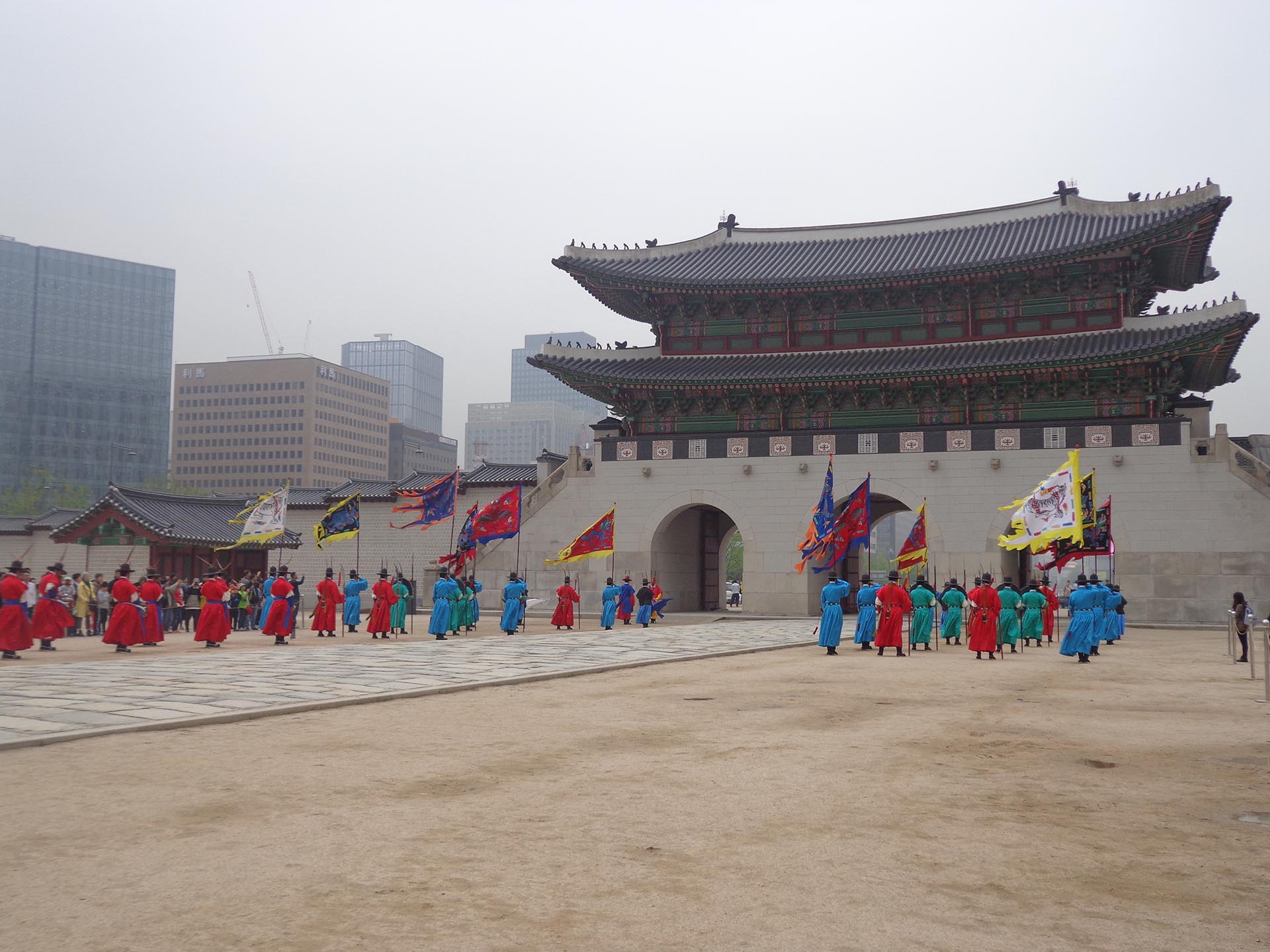
The Historical Significance of Gwanghwamun Gate
Origins in the Joseon Dynasty
Gwanghwamun Gate was originally constructed in 1395, during the fourth year of King Taejo’s reign, who was the founder of the Joseon Dynasty. As the main gate of Gyeongbokgung Palace, it served as the principal entrance to the royal residence and the heart of the nation’s administration.
Symbol of Sovereignty
The gate’s name, “Gwanghwamun,” means “The Gate of Illuminating Light,” symbolizing the king’s enlightenment and authority. It was designed to reflect the power and prestige of the Joseon Dynasty, which ruled Korea for over five centuries.
Destruction and Reconstruction
Gwanghwamun has faced multiple destructions and reconstructions throughout its history. The first major destruction occurred during the Japanese invasions of Korea (1592-1598). The gate was later reconstructed in 1867, only to be destroyed again during the Japanese colonial period (1910-1945).
Japanese Occupation
During the Japanese occupation, the gate was dismantled and moved to make way for the construction of the Governor-General’s building. This period was marked by significant cultural suppression, with many Korean landmarks being altered or destroyed.
Post-Liberation Restoration
After Korea gained independence in 1945, efforts to restore Gwanghwamun began. The first significant restoration took place in 1968, but it wasn’t until 2010 that a comprehensive restoration project was completed. This project aimed to restore Gwanghwamun to its original grandeur using traditional construction techniques and materials.
Architectural Grandeur of Gwanghwamun Gate
Traditional Korean Architecture
Gwanghwamun Gate is a stunning example of traditional Korean architecture, characterized by its intricate wooden structure, tiled roof, and ornate decorations.
The Three-Arch Design
The gate features a three-arch design, with a central passage reserved for the king and two smaller side passages for officials and commoners. This design reflects the hierarchical nature of Joseon society, emphasizing the king’s supreme status.
Roof and Eaves
The gate’s roof is a multi-tiered structure adorned with colorful dancheong (decorative patterns). The eaves curve gracefully, showcasing the elegance and complexity of traditional Korean architectural techniques.
Guardian Statues
Flanking the gate are stone statues of haetae, mythical creatures believed to ward off evil spirits. These guardians add to the gate’s majestic presence and symbolize protection and good fortune.
The Pavilion
Above the arches, the gate features a pavilion called “Gwanghwamun Pavilion,” where the king would make important announcements and observe ceremonies. The pavilion is supported by wooden pillars and is richly decorated with vibrant colors and intricate carvings.
Restoration Details
The 2010 restoration project meticulously reconstructed the pavilion using traditional methods, such as natural pigments for painting and interlocking wooden joints without nails. This attention to detail ensures that Gwanghwamun Gate remains a faithful representation of its historical form.

Cultural Importance of Gwanghwamun Gate
Symbol of National Identity
Gwanghwamun Gate is more than an architectural marvel; it is a powerful symbol of Korean identity and resilience. It represents the country’s enduring spirit and its ability to preserve and restore its cultural heritage despite historical adversities.
Historical Events and Ceremonies
Throughout its history, Gwanghwamun Gate has been the site of numerous significant events and ceremonies, including royal processions, military parades, and public announcements. These events have cemented its status as a cultural and historical landmark.
Gwanghwamun Square
In front of Gwanghwamun Gate lies Gwanghwamun Square, a public space that serves as a cultural and civic center. The square features statues of historical figures, such as King Sejong the Great and Admiral Yi Sun-sin, as well as fountains, gardens, and pedestrian paths.
Cultural Performances and Festivals
Gwanghwamun Square is a popular venue for cultural performances, festivals, and public gatherings. It hosts various events throughout the year, celebrating traditional Korean arts, music, and heritage.
Changing of the Guard Ceremony
One of the most popular attractions at Gwanghwamun Gate is the Changing of the Guard Ceremony. This reenactment of the royal guard’s traditional duties provides visitors with a glimpse into the pageantry and precision of Joseon-era military customs.
Details of the Ceremony
The ceremony involves guards dressed in vibrant, traditional uniforms performing synchronized drills, music played on traditional instruments, and the symbolic exchange of the guard. It takes place multiple times a day, attracting both locals and tourists.
Educational Programs and Museums
Adjacent to Gwanghwamun Gate are several museums and cultural institutions that offer educational programs and exhibitions related to Korean history and culture. The National Palace Museum of Korea and the National Folk Museum of Korea are notable examples.
Interactive Exhibits
These museums feature interactive exhibits, workshops, and guided tours that provide visitors with a deeper understanding of Korea’s royal heritage, traditional customs, and historical artifacts.
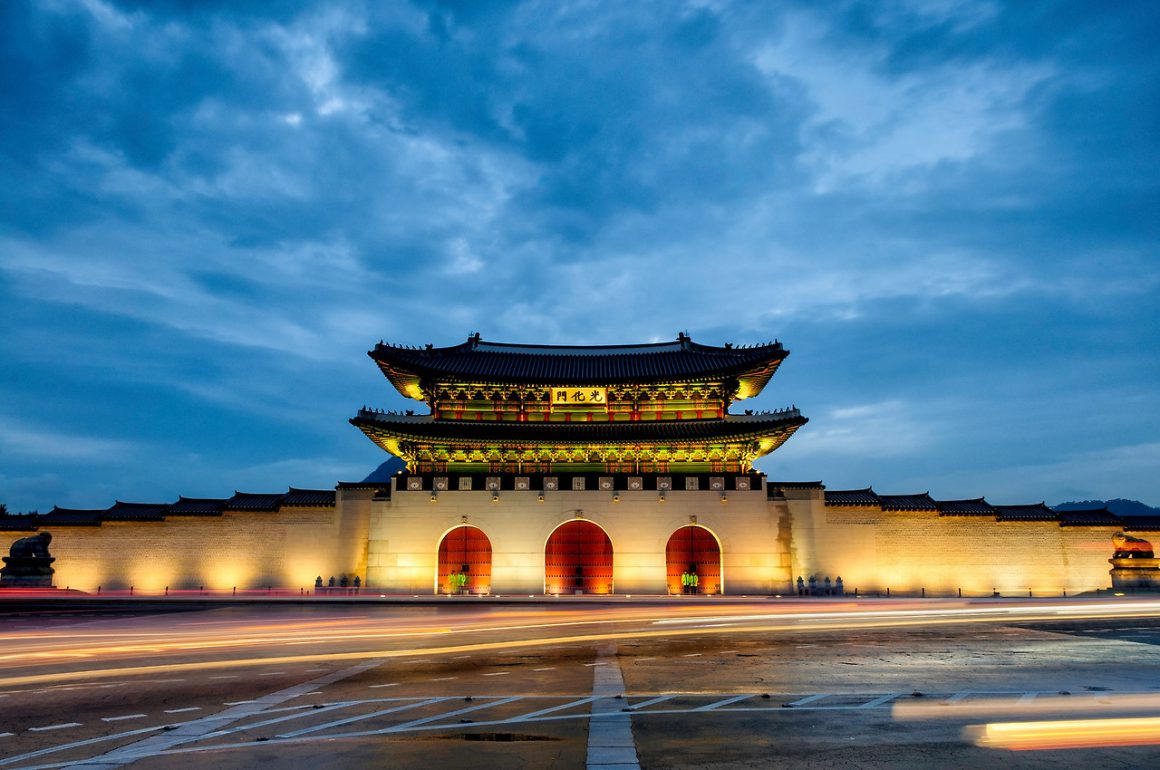
Visiting Gwanghwamun Gate
How to Get There
Gwanghwamun Gate is easily accessible by public transportation, making it a convenient destination for visitors to Seoul.
Subway
- Line 3 (Orange Line): Gwanghwamun Station (Exit 9) is the closest subway station to the gate. Follow the signs to Gyeongbokgung Palace, and you will find Gwanghwamun Gate at the entrance.
- Line 5 (Purple Line): Gyeongbokgung Station (Exit 5) is another nearby option, located a short walk from the palace grounds.
Admission and Hours
Gwanghwamun Gate itself is free to visit, but there is an admission fee for entering Gyeongbokgung Palace. The palace is open daily except on Tuesdays.
Gyeongbokgung Palace Admission
- Adults: 3,000 KRW
- Children (Ages 7-18): 1,500 KRW
- Free Admission: For children under 7 and seniors over 65
Operating Hours
- March to October: 9:00 AM – 6:00 PM (Last admission at 5:00 PM)
- November to February: 9:00 AM – 5:00 PM (Last admission at 4:00 PM)
Guided Tours
Guided tours are available in multiple languages and provide valuable insights into the history and significance of Gwanghwamun Gate and Gyeongbokgung Palace.
Tour Schedule
- English Tours: 11:00 AM, 1:30 PM, and 3:30 PM
- Japanese Tours: 10:00 AM and 2:00 PM
- Chinese Tours: 10:30 AM and 1:00 PM
Visitor Tips
- Plan Your Visit: To fully appreciate Gwanghwamun Gate and Gyeongbokgung Palace, allocate at least half a day for your visit. Start early to avoid crowds and allow time to explore the surrounding area.
- Dress Comfortably: Wear comfortable shoes and clothing, as you will be doing a fair amount of walking. Consider bringing a hat and sunscreen during the summer months.
- Respect the Heritage: Remember that Gwanghwamun Gate is a cultural and historical site. Be respectful by following the rules, not littering, and being mindful of your behavior.
- Check the Weather: Seoul experiences distinct seasons, so check the weather forecast and dress appropriately. The palace grounds can be particularly beautiful in spring and autumn.
- Photography: Gwanghwamun Gate is a popular spot for photography. Bring your camera to capture the stunning architecture and picturesque surroundings. However, be mindful of any restrictions on photography inside the museums and palace buildings.

Gyeongbokgung Palace: Beyond Gwanghwamun Gate
The Throne Hall (Geunjeongjeon)
Beyond Gwanghwamun Gate lies Gyeongbokgung Palace, the largest and most important of the Five Grand Palaces built during the Joseon Dynasty. The Throne Hall, known as Geunjeongjeon, is the main hall where the king conducted state affairs.
Architectural Highlights
Geunjeongjeon is a masterpiece of traditional Korean architecture, featuring a two-tiered stone platform, wooden columns, and intricate carvings. The hall’s interior is equally impressive, with a royal throne and richly decorated ceiling.
The Royal Residence (Gangnyeongjeon)
Gangnyeongjeon served as the king’s living quarters. This building is designed to provide comfort and security, with private gardens and courtyards surrounding it.
Layout and Design
The layout of Gangnyeongjeon reflects the principles of Confucianism, emphasizing harmony and balance. The building’s architecture incorporates natural elements, creating a serene and peaceful environment.
The Queen’s Quarters (Gyotaejeon)
Gyotaejeon was the residence of the queen, located to the west of the Throne Hall. It includes a main hall, private chambers, and a beautiful rear garden called Amisan.
Amisan Garden
Amisan Garden is a picturesque space with stone terraces, flowering plants, and decorative chimneys. It’s a tranquil spot that offers a glimpse into the daily life of the royal family.
The Secret Garden (Huwon)
Also known as the Rear Garden, Huwon is a secluded area used by the royal family for leisure and relaxation. The garden features ponds, pavilions, and walking paths.
Highlights of Huwon
- Buyongjeong Pavilion: A charming pavilion overlooking a lotus pond, perfect for contemplation and enjoying nature.
- Juhamnu Pavilion: A two-story pavilion that served as a library and study for the king.
- Yeongyeongdang Residence: A traditional Korean house used for banquets and cultural performances.
National Palace Museum of Korea
Located near the entrance of Gyeongbokgung Palace, the National Palace Museum of Korea houses an extensive collection of artifacts related to the Joseon Dynasty.
Exhibitions
The museum’s exhibitions cover various aspects of royal life, including court ceremonies, clothing, art, and music. Interactive displays and multimedia presentations provide an engaging and educational experience for visitors.
National Folk Museum of Korea
Situated within the palace grounds, the National Folk Museum of Korea offers insights into the daily lives of Korean people throughout history.
Permanent Exhibitions
The museum’s permanent exhibitions include traditional Korean houses, agricultural tools, folk crafts, and rituals. It provides a comprehensive overview of Korea’s cultural heritage and traditions.
Modern Significance and Events
Restoration and Preservation Efforts
The restoration of Gwanghwamun Gate and Gyeongbokgung Palace is an ongoing process, supported by the South Korean government and cultural organizations. These efforts aim to preserve the country’s historical legacy and promote cultural tourism.
Future Plans
Future restoration projects include the reconstruction of additional palace buildings and the enhancement of visitor facilities. These plans ensure that Gwanghwamun Gate and its surroundings remain a vibrant cultural destination.
Cultural Events and Performances
Gwanghwamun Gate and Gyeongbokgung Palace host various cultural events and performances throughout the year, celebrating traditional Korean arts and heritage.
Popular Events
- Royal Guard Changing Ceremony: This daily event reenacts the changing of the royal guards, complete with traditional costumes and music.
- Nighttime Tours: Special nighttime tours of the palace offer a magical experience, with the buildings illuminated and cultural performances adding to the ambiance.
- Seasonal Festivals: The palace grounds host seasonal festivals, such as the Lantern Festival, Hanbok Day, and Chuseok celebrations, providing visitors with a deeper appreciation of Korean culture.
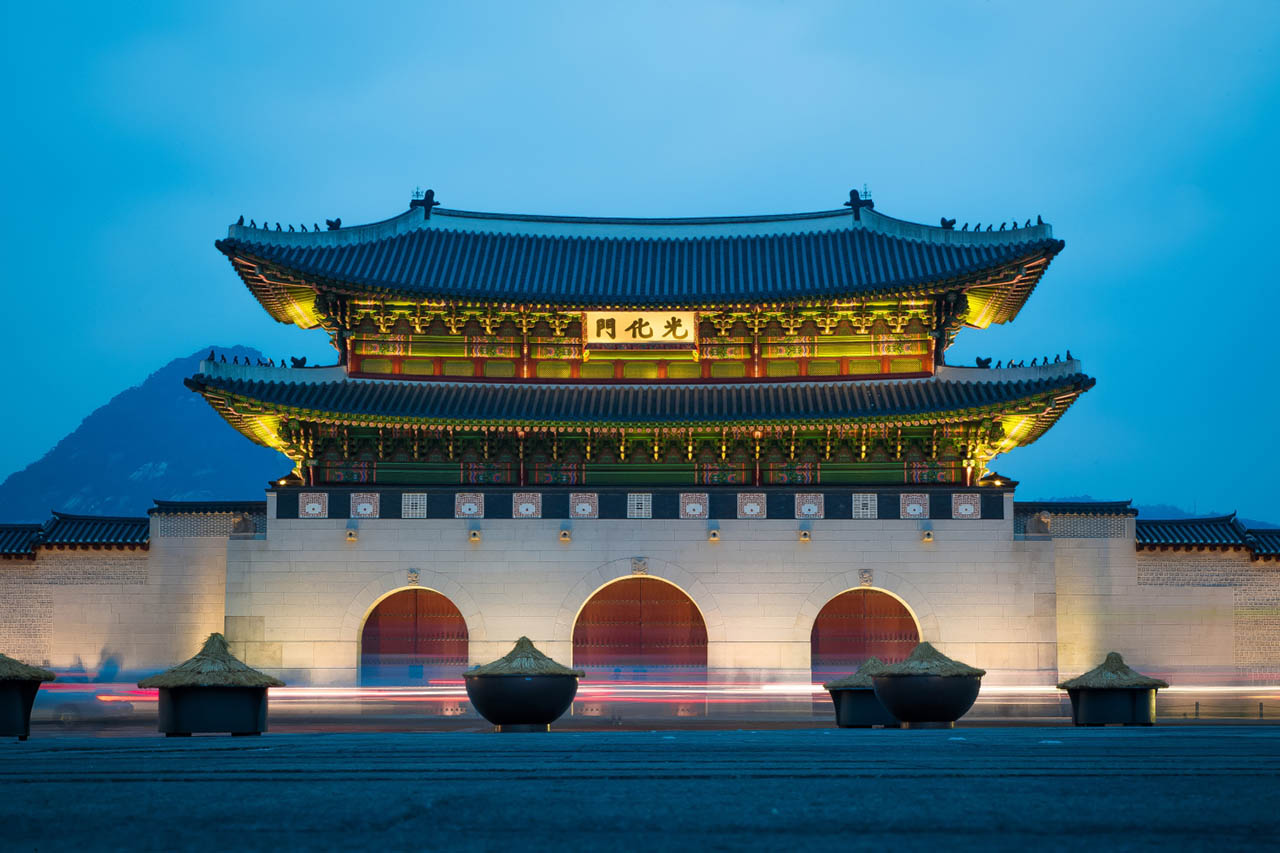
Conclusion
Gwanghwamun Gate stands as a testament to South Korea’s enduring spirit and rich cultural heritage. From its historical significance and architectural grandeur to its role as a symbol of national identity, the gate is a must-visit destination for anyone exploring Seoul. As you pass through Gwanghwamun Gate and enter the magnificent grounds of Gyeongbokgung Palace, you are not just stepping into a historical site but immersing yourself in the legacy of a nation. Whether you’re a history buff, architecture enthusiast, or cultural explorer, Gwanghwamun Gate offers an unforgettable journey through time.

